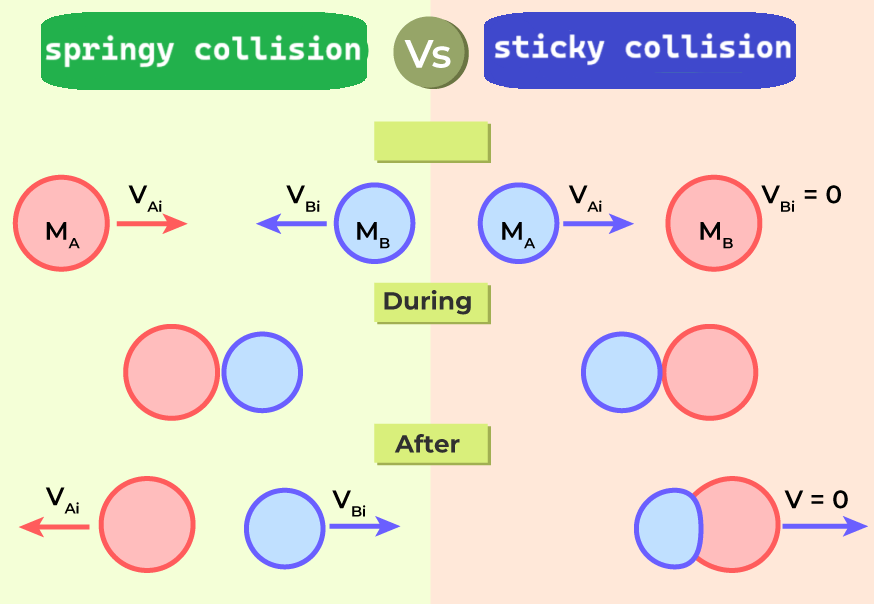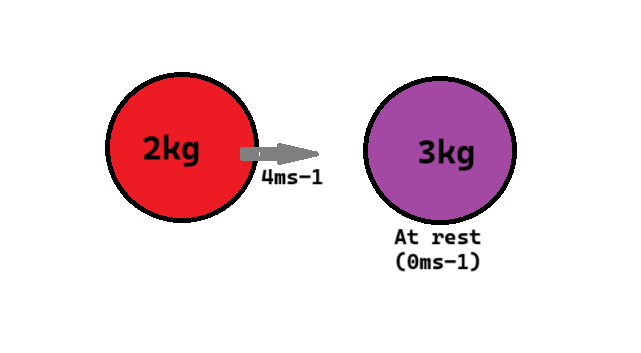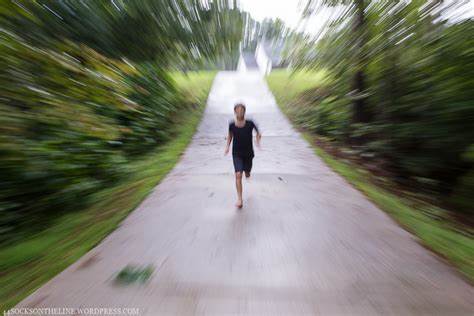Springy and Sticky Collisions
- Collisions: When two objects collide, they interact with each other, and momentum is transferred between them. However, the total momentum of the two objects remains the same before and after the collision.
- A sticky collision is where two objects "stick together" after a collision.
- A springy collision is where two objects are separated after the collision.
- All sticky collisions are inelastic.
- Most springy collisions are elastic but some may be inelastic.



